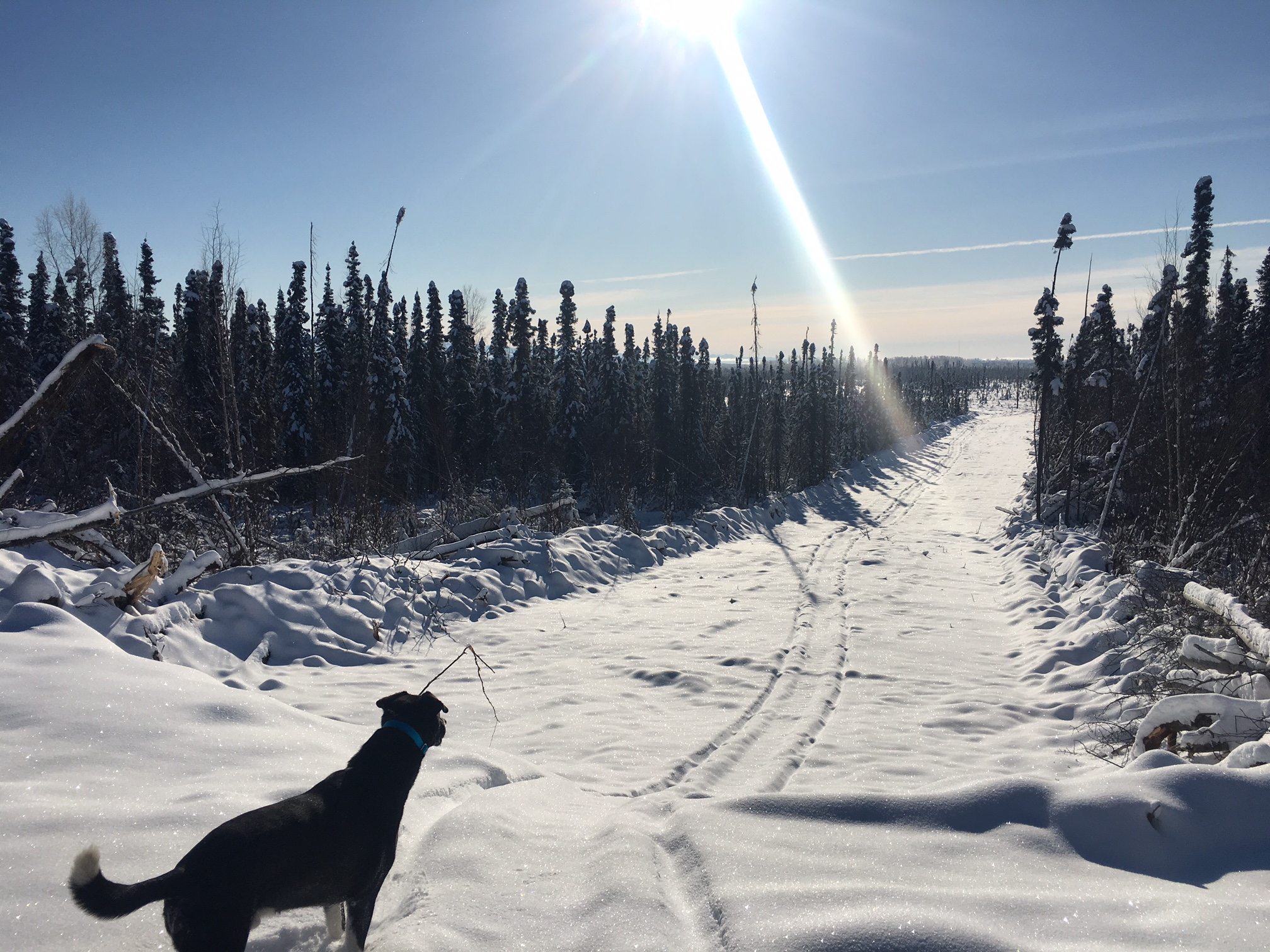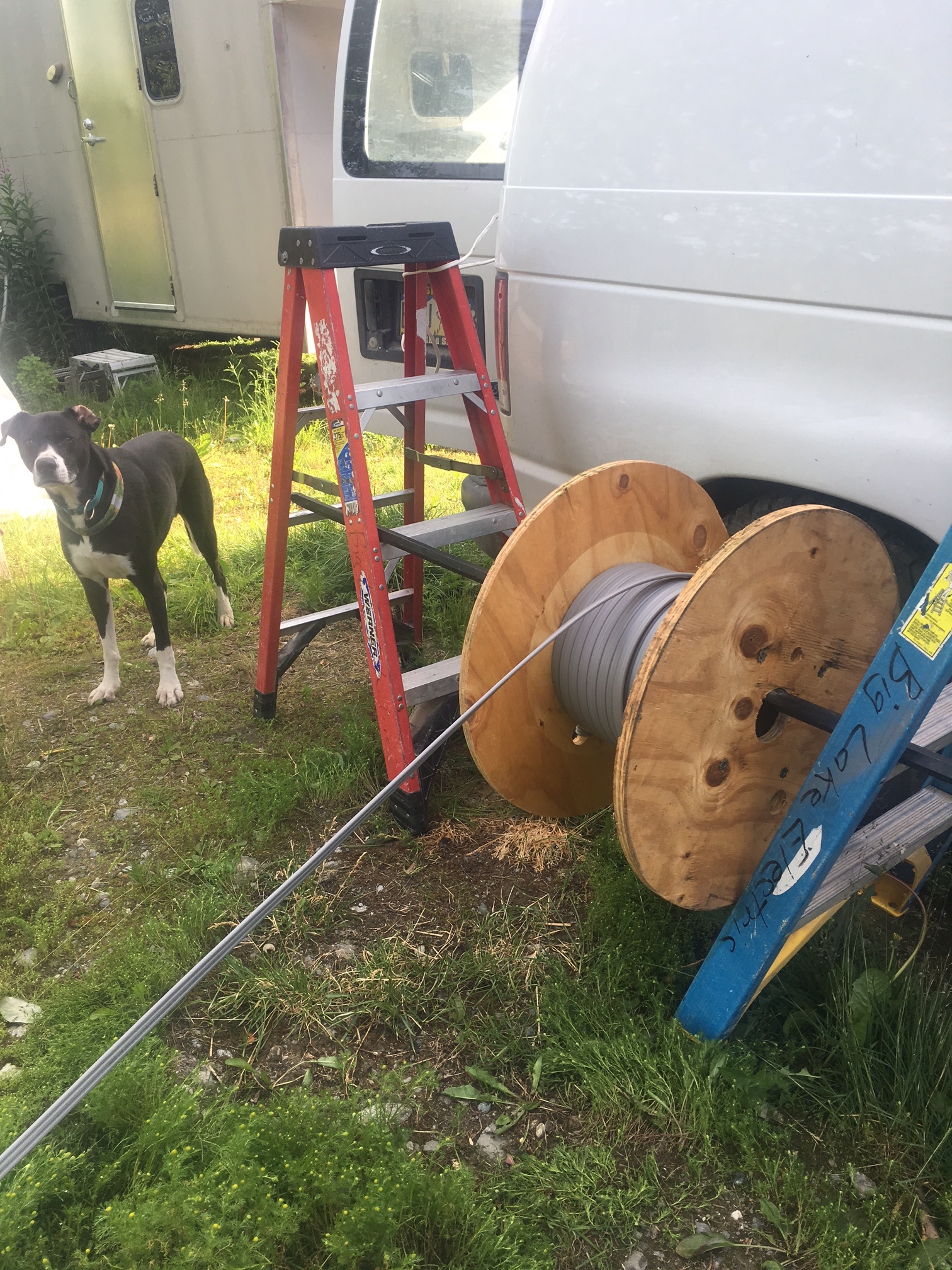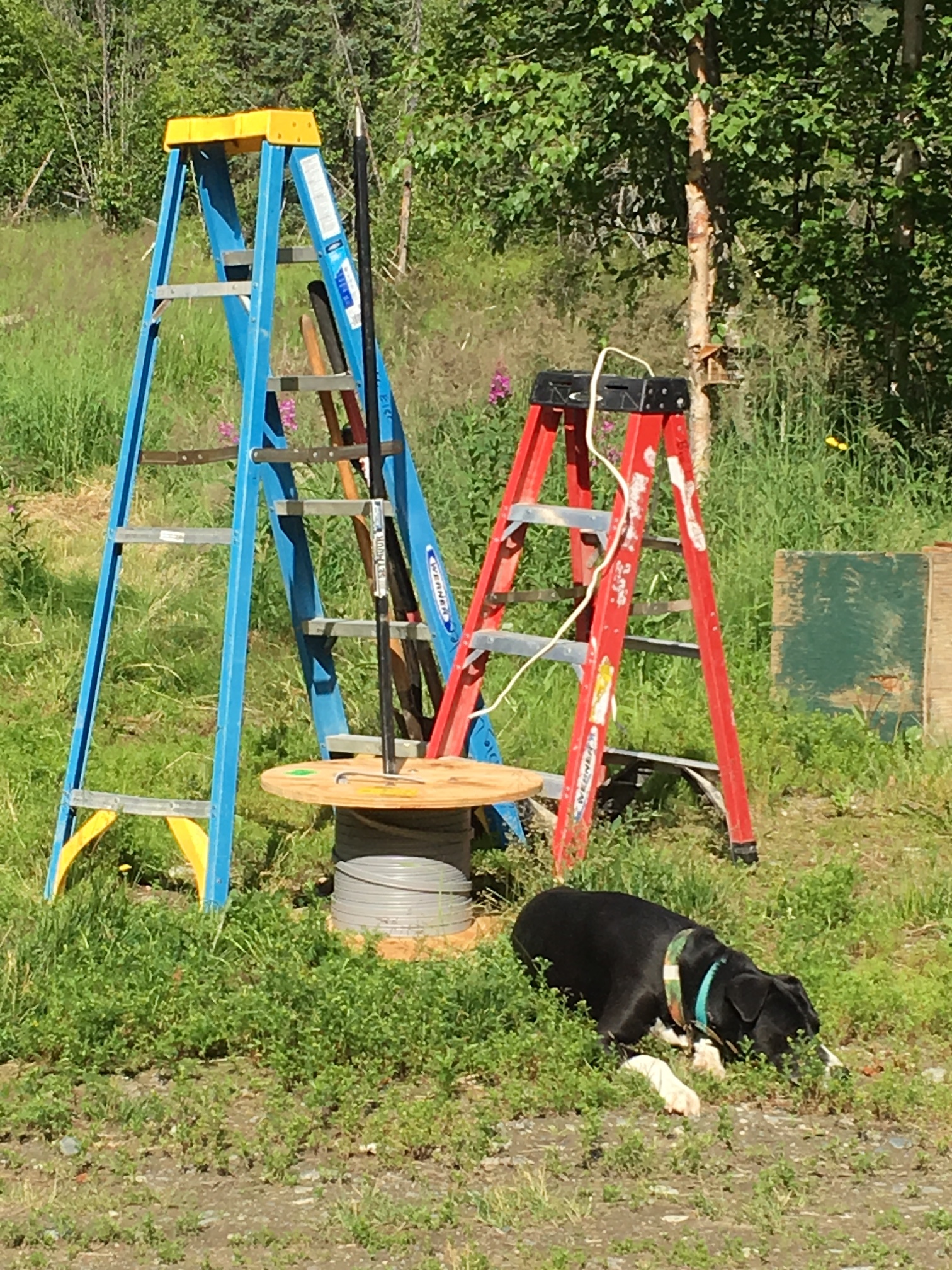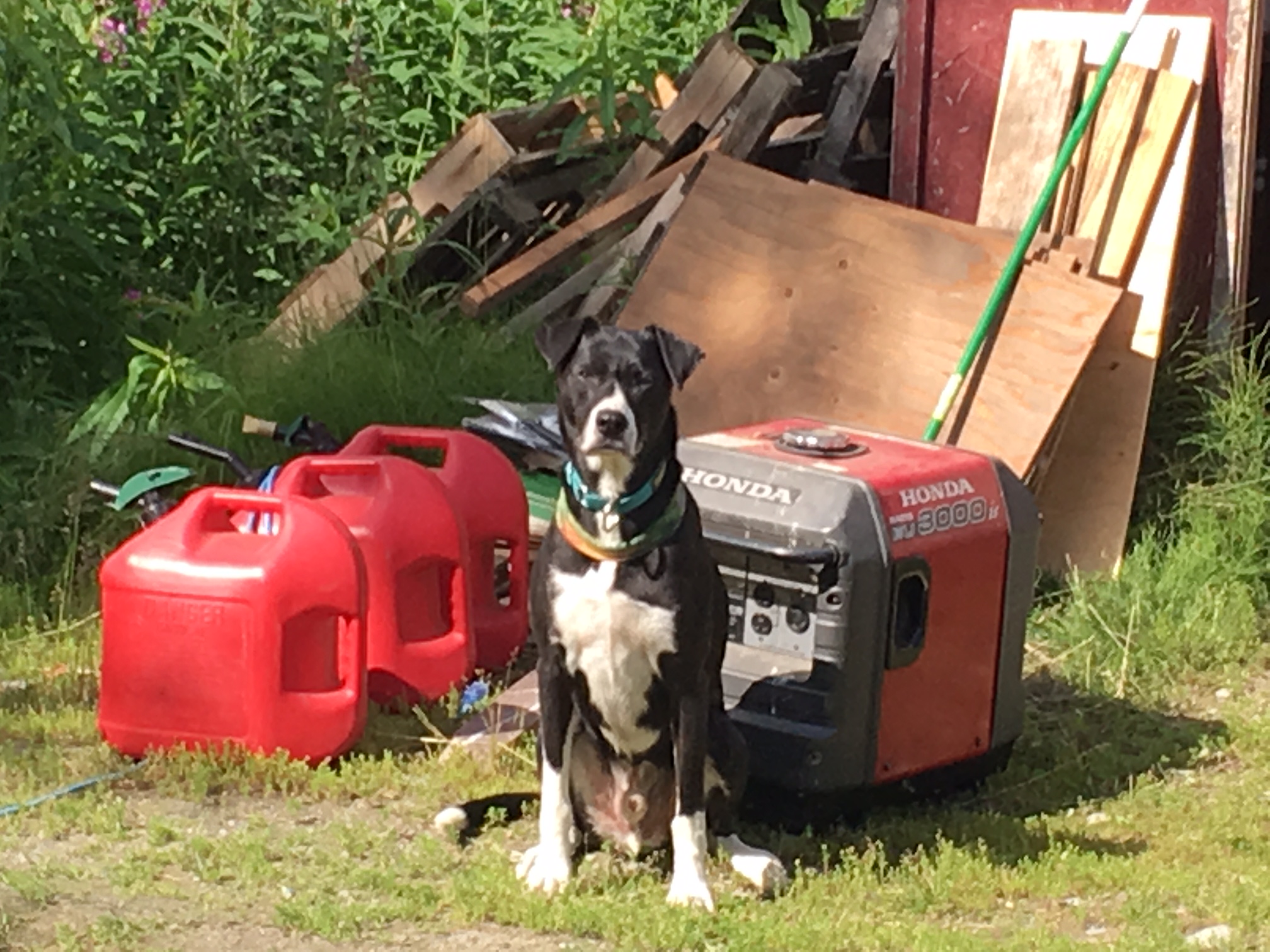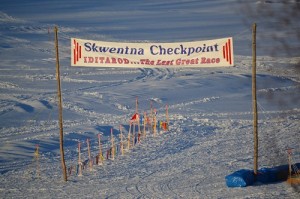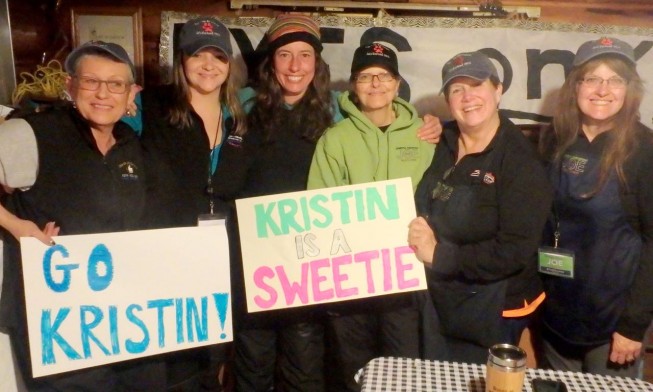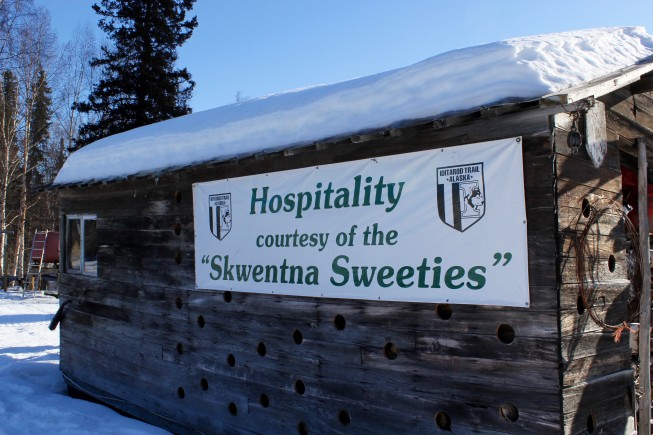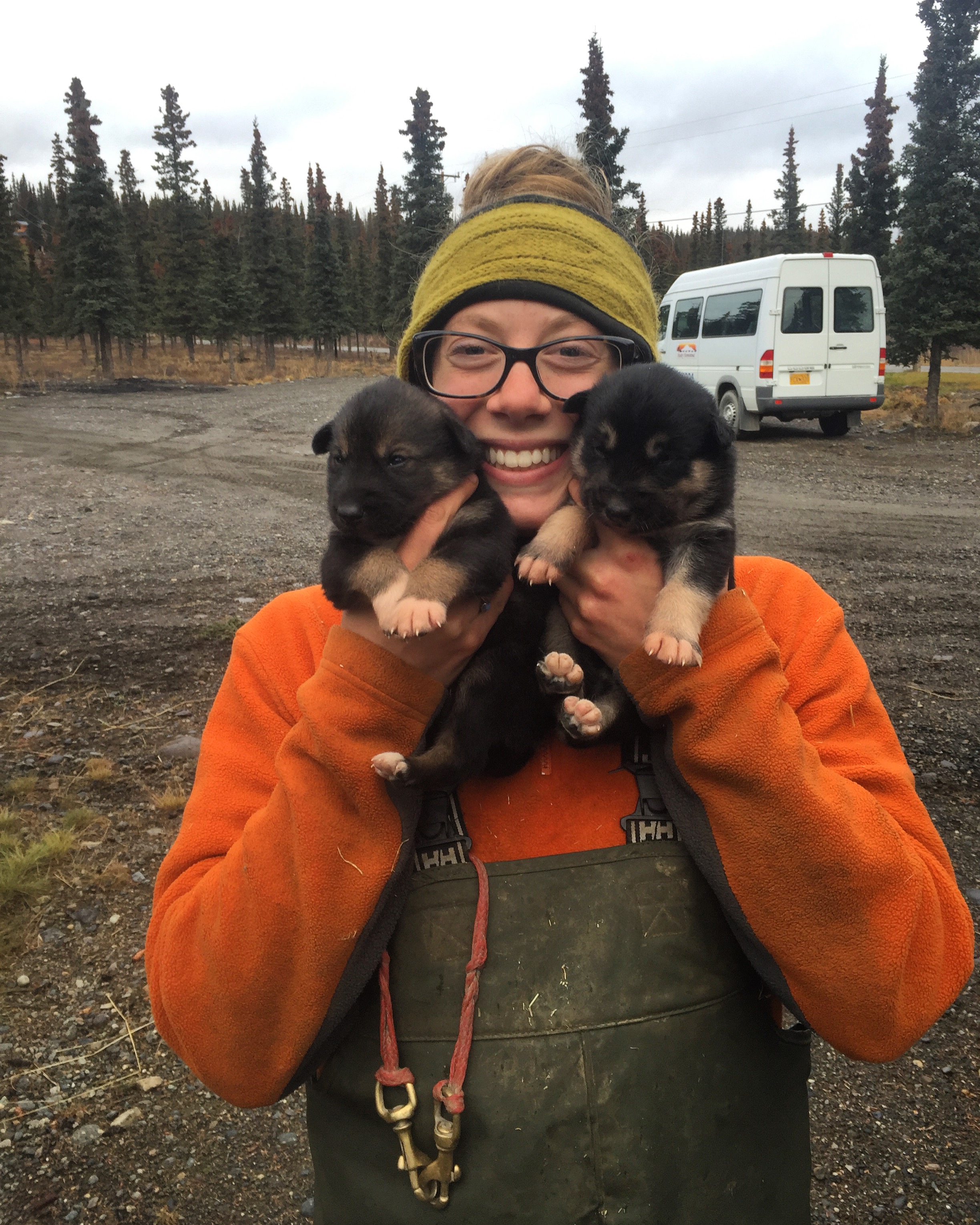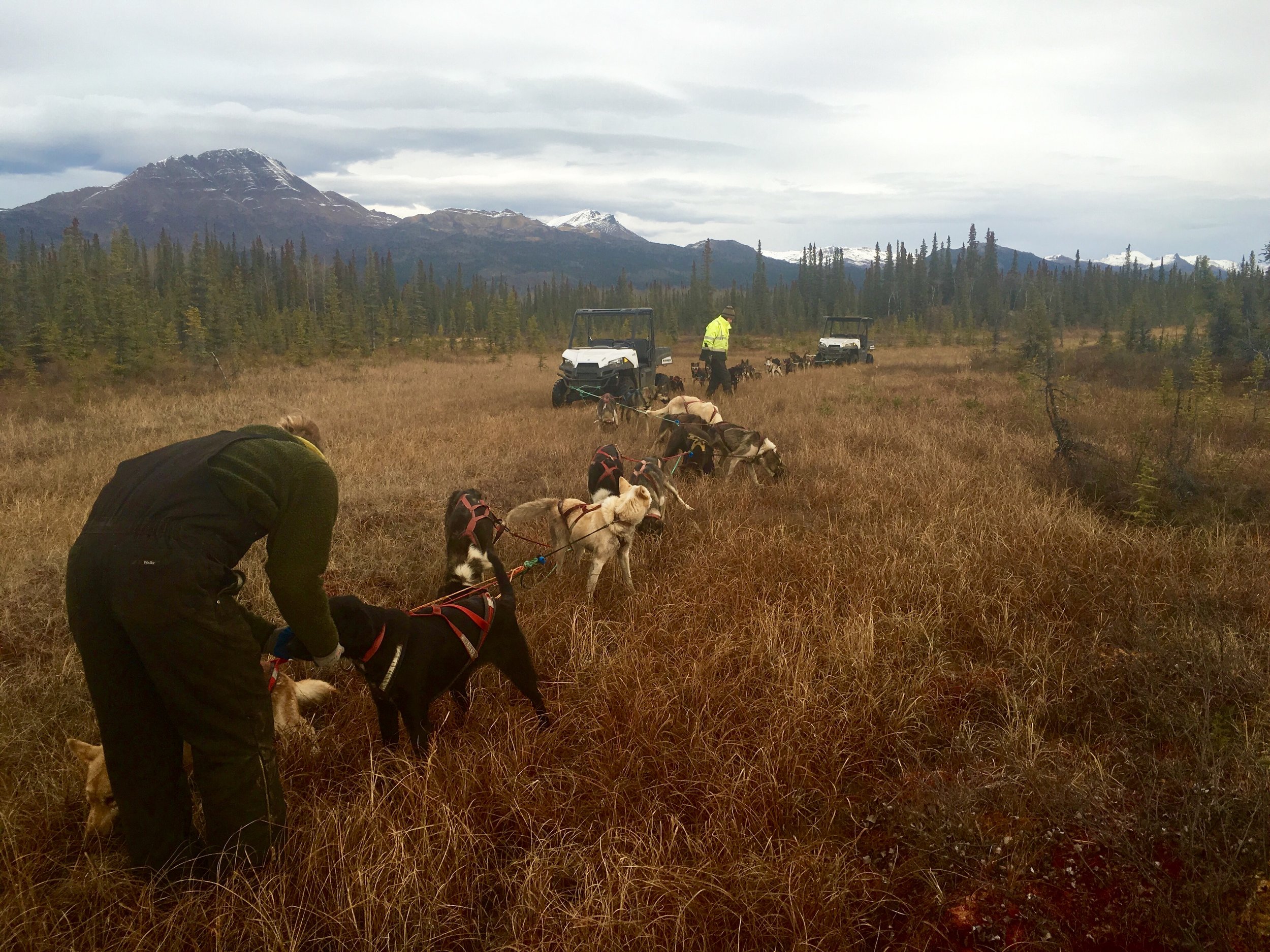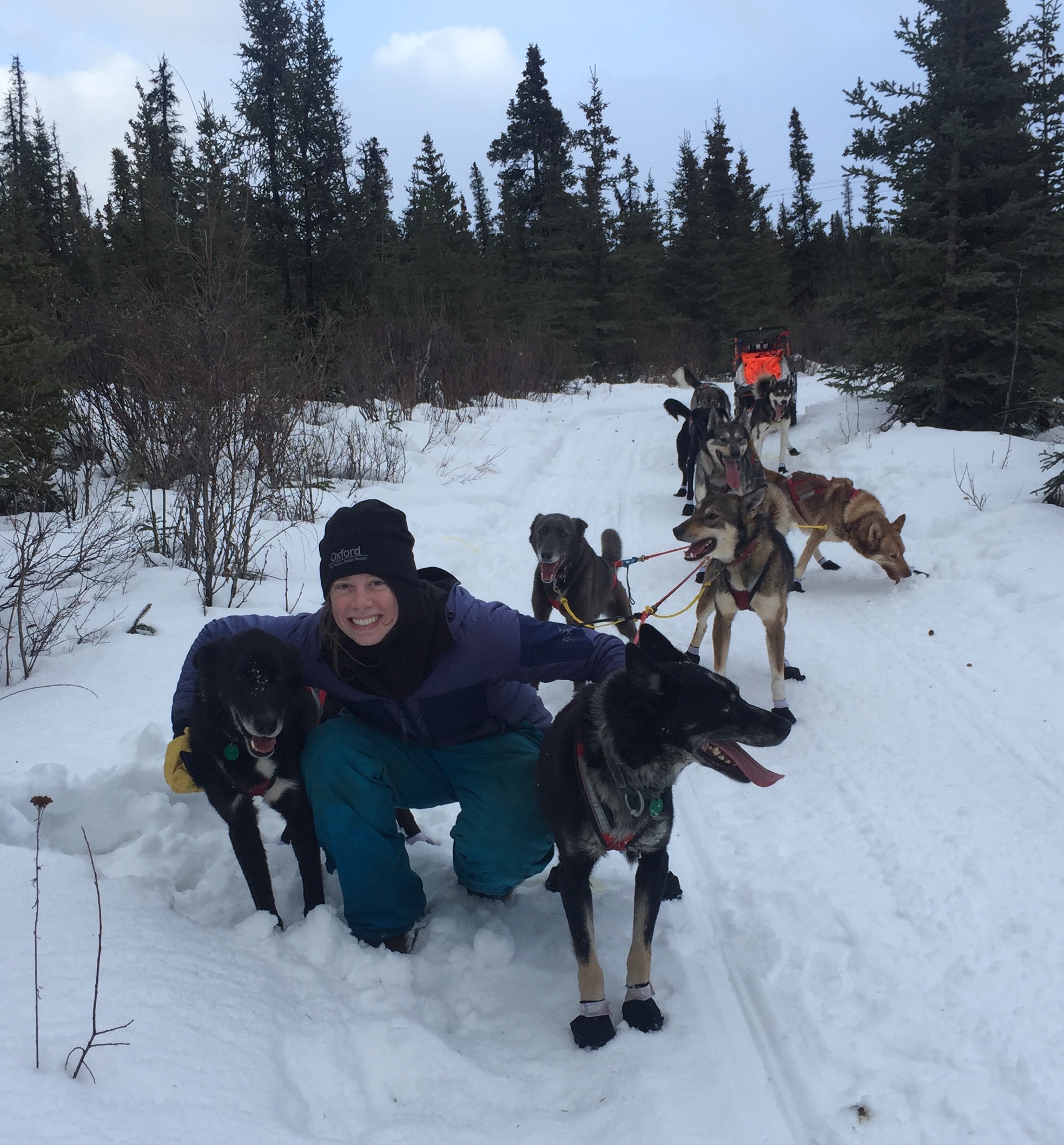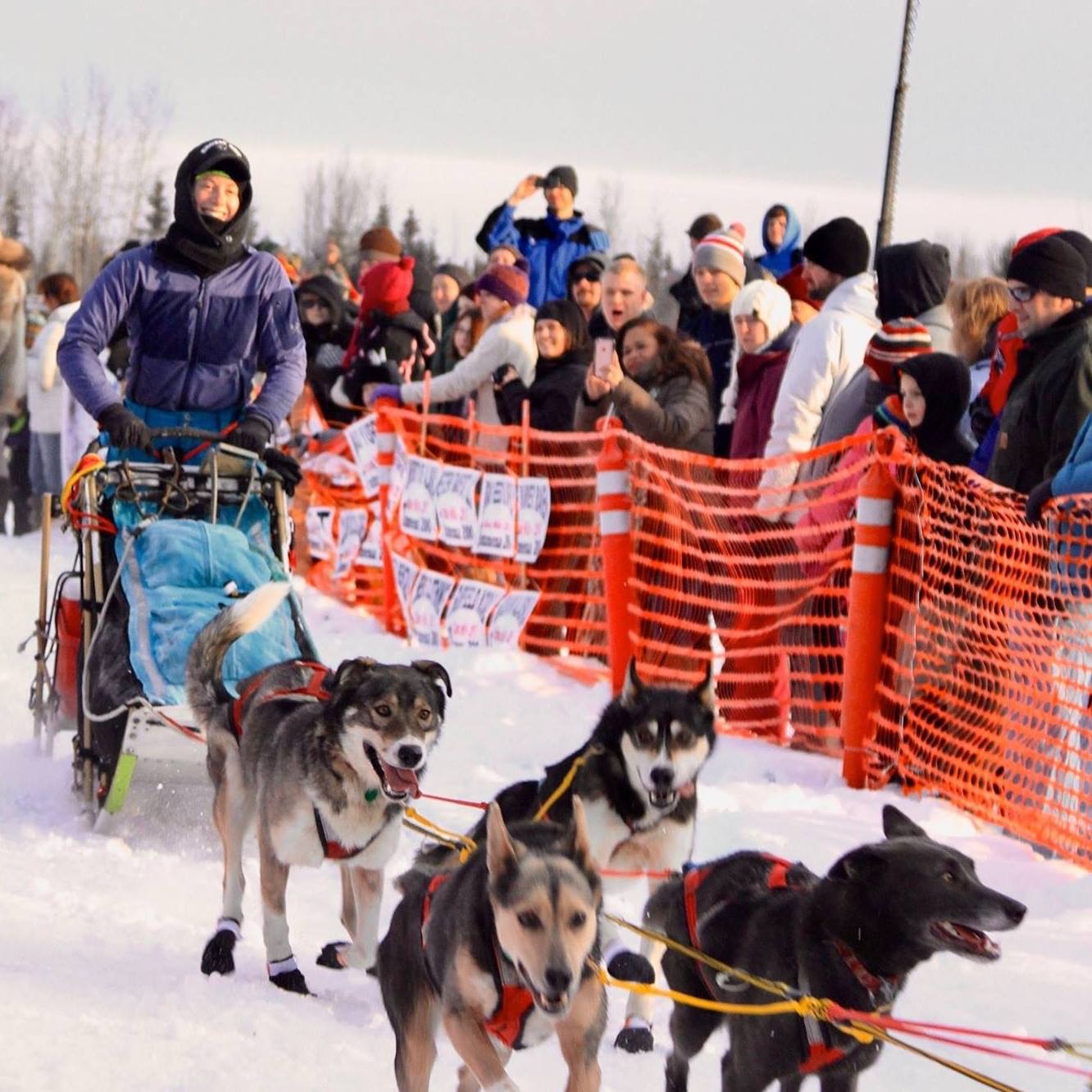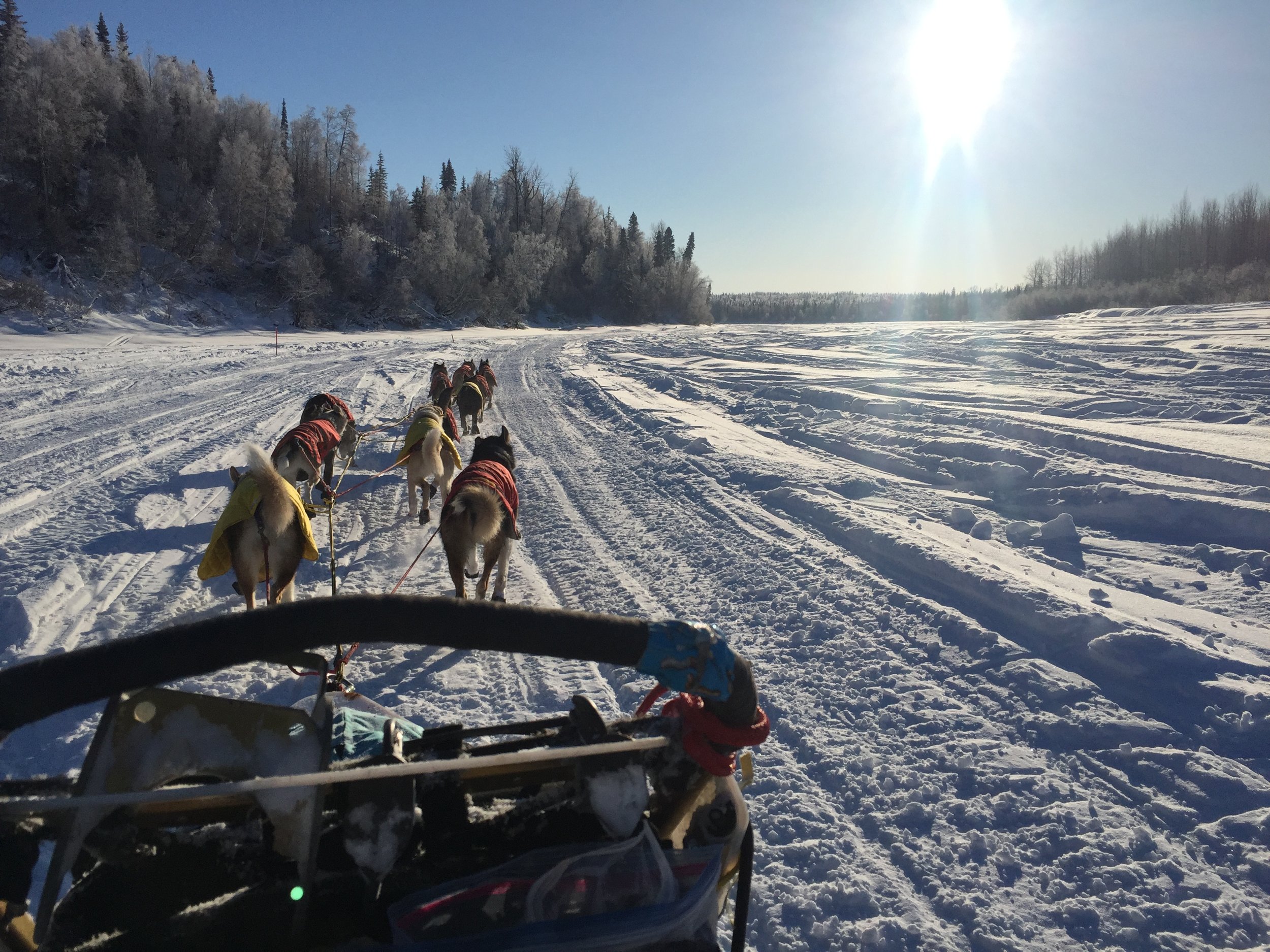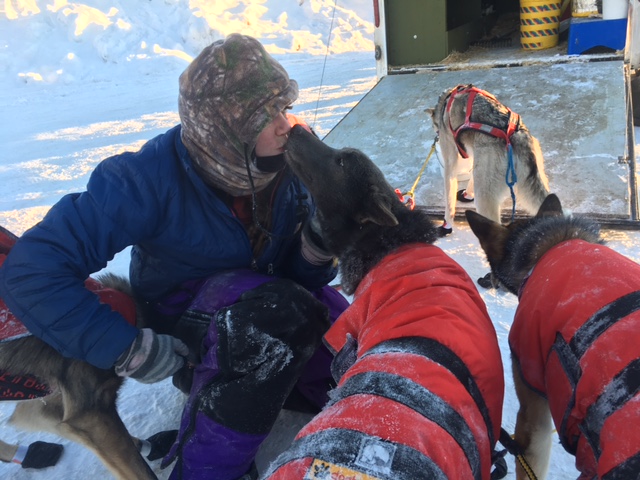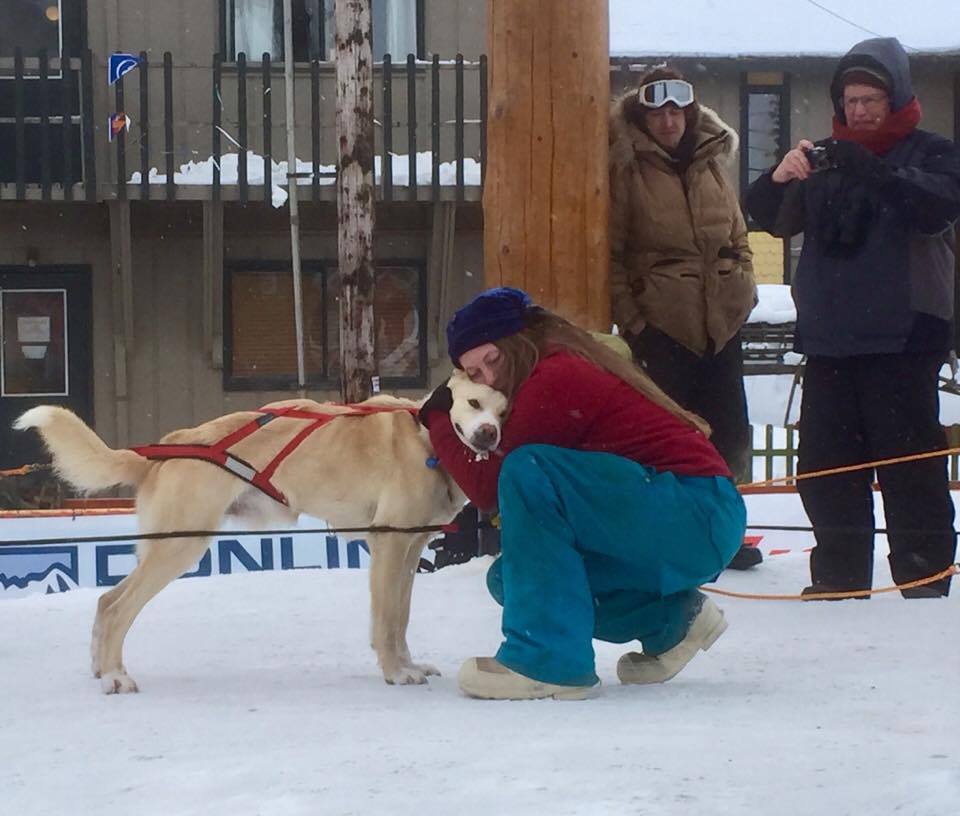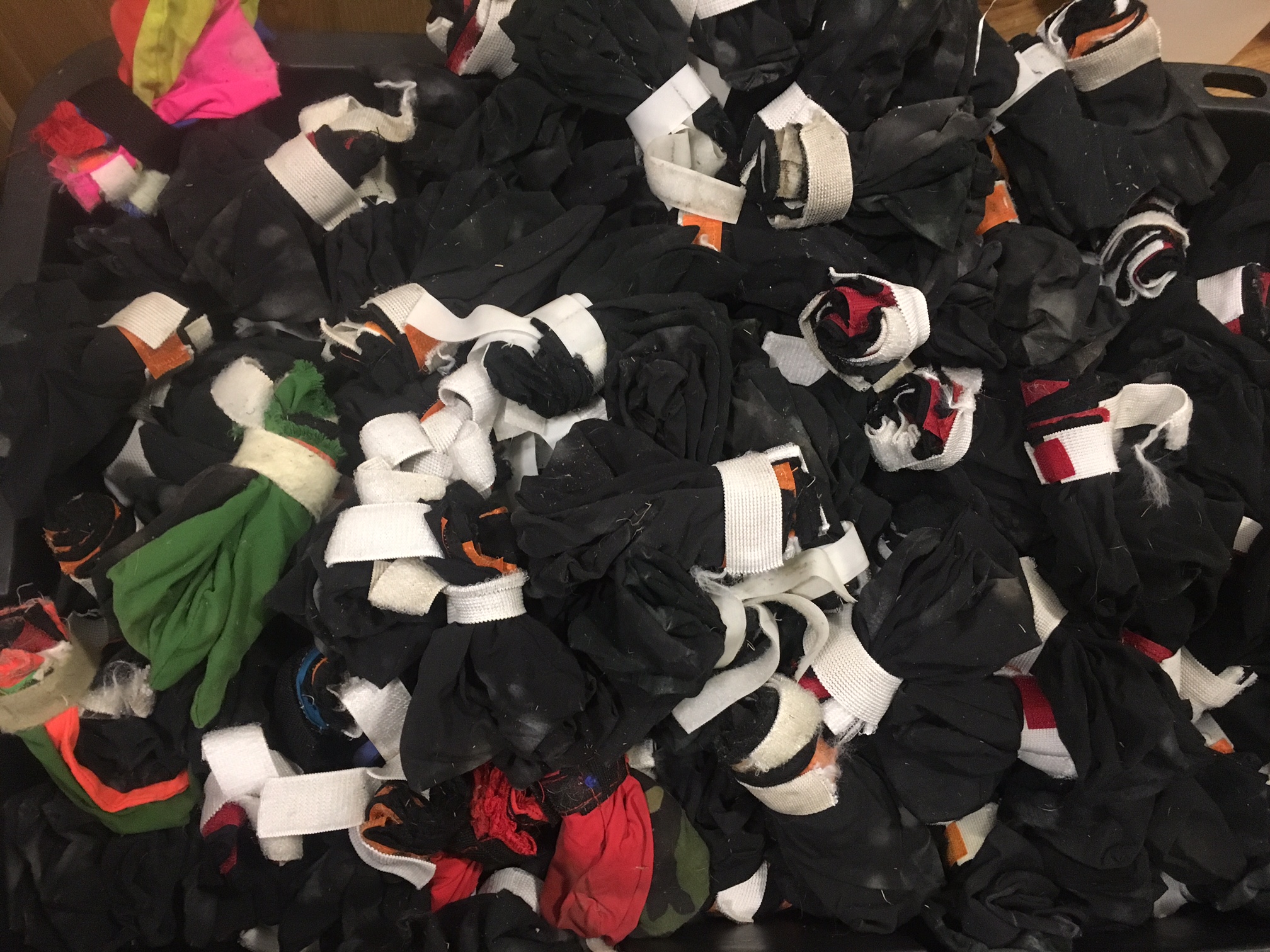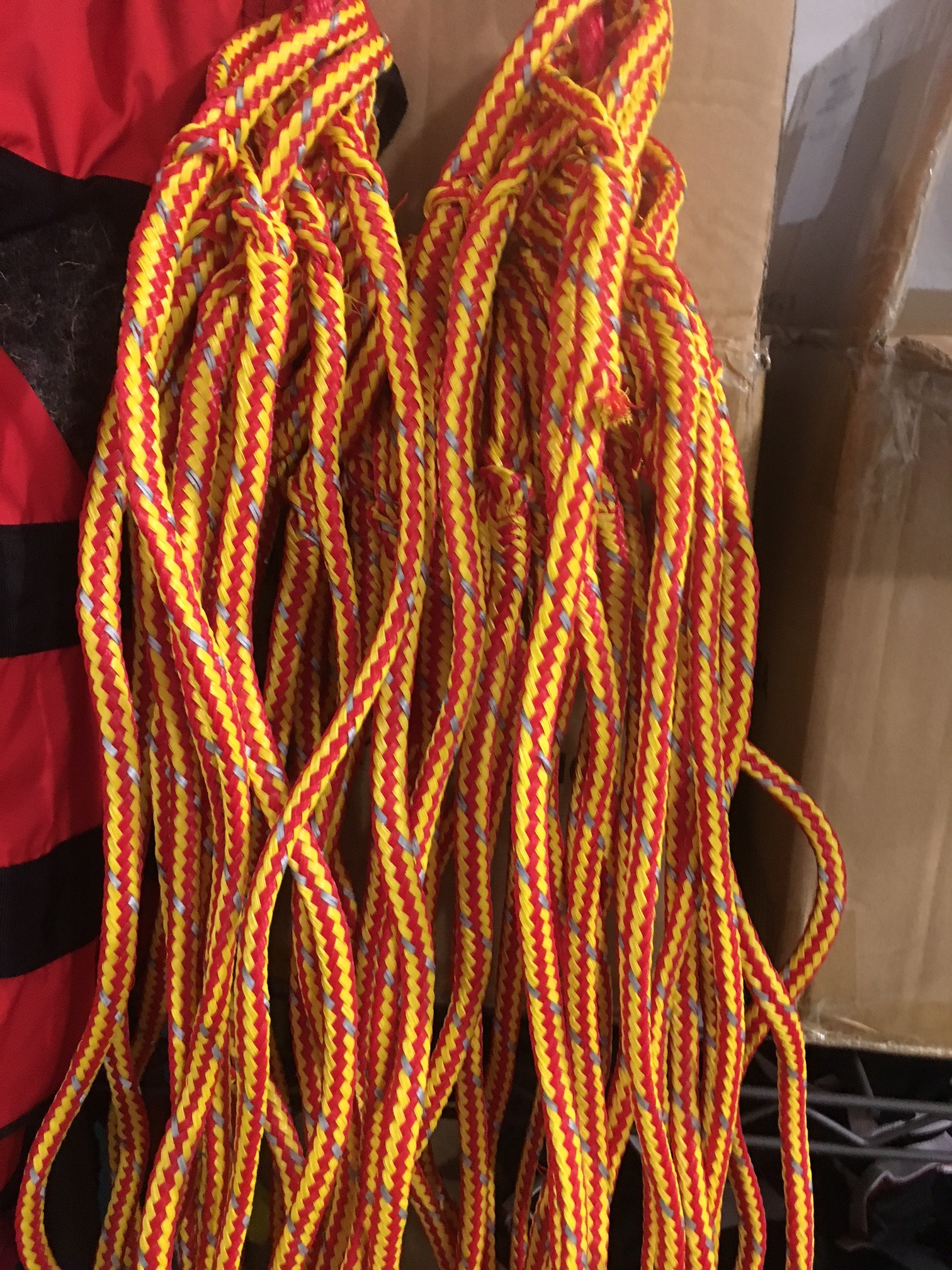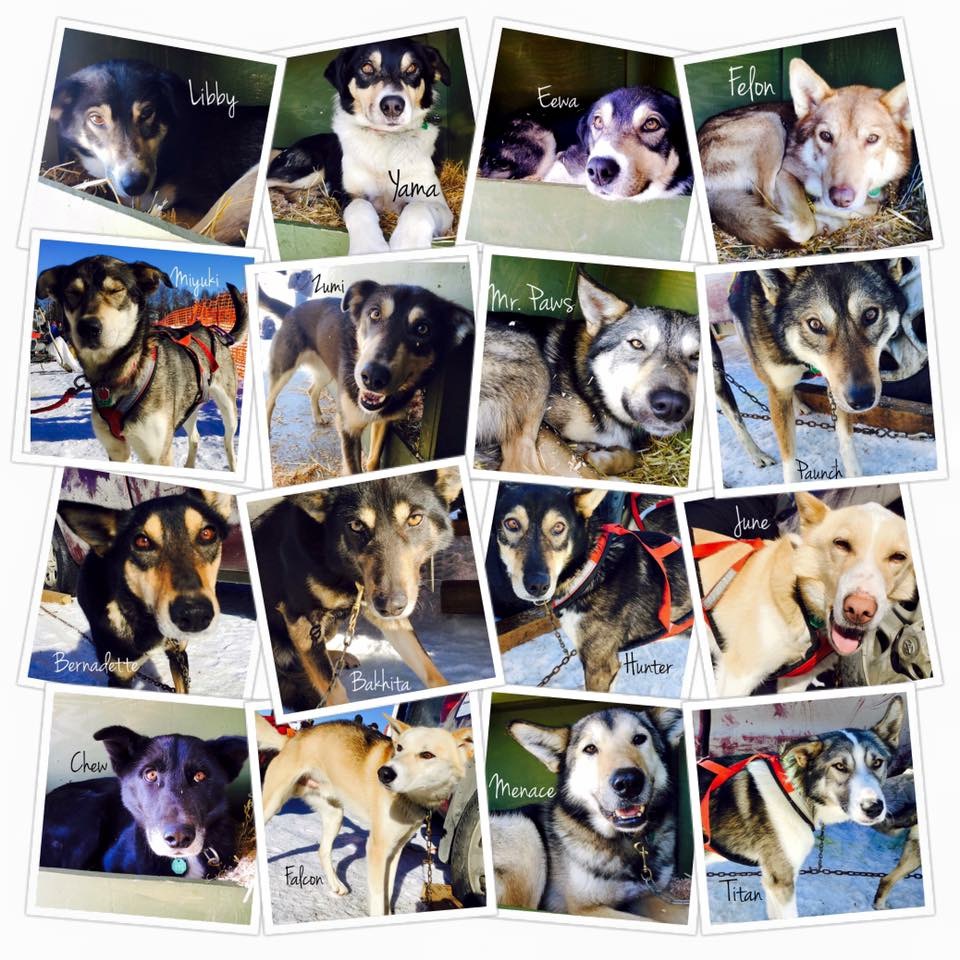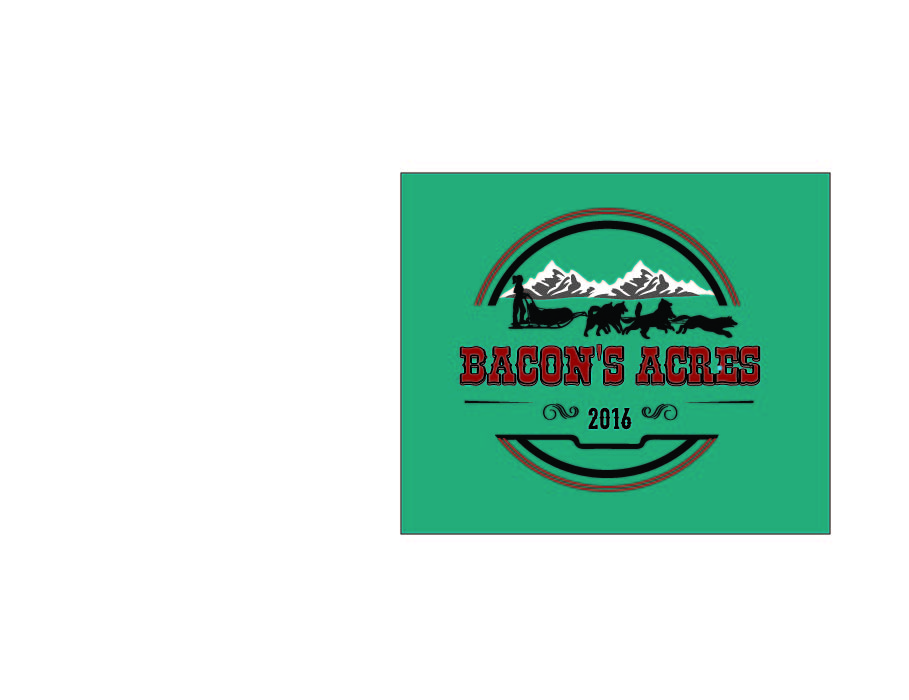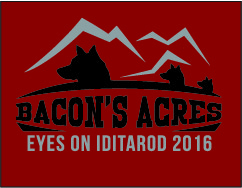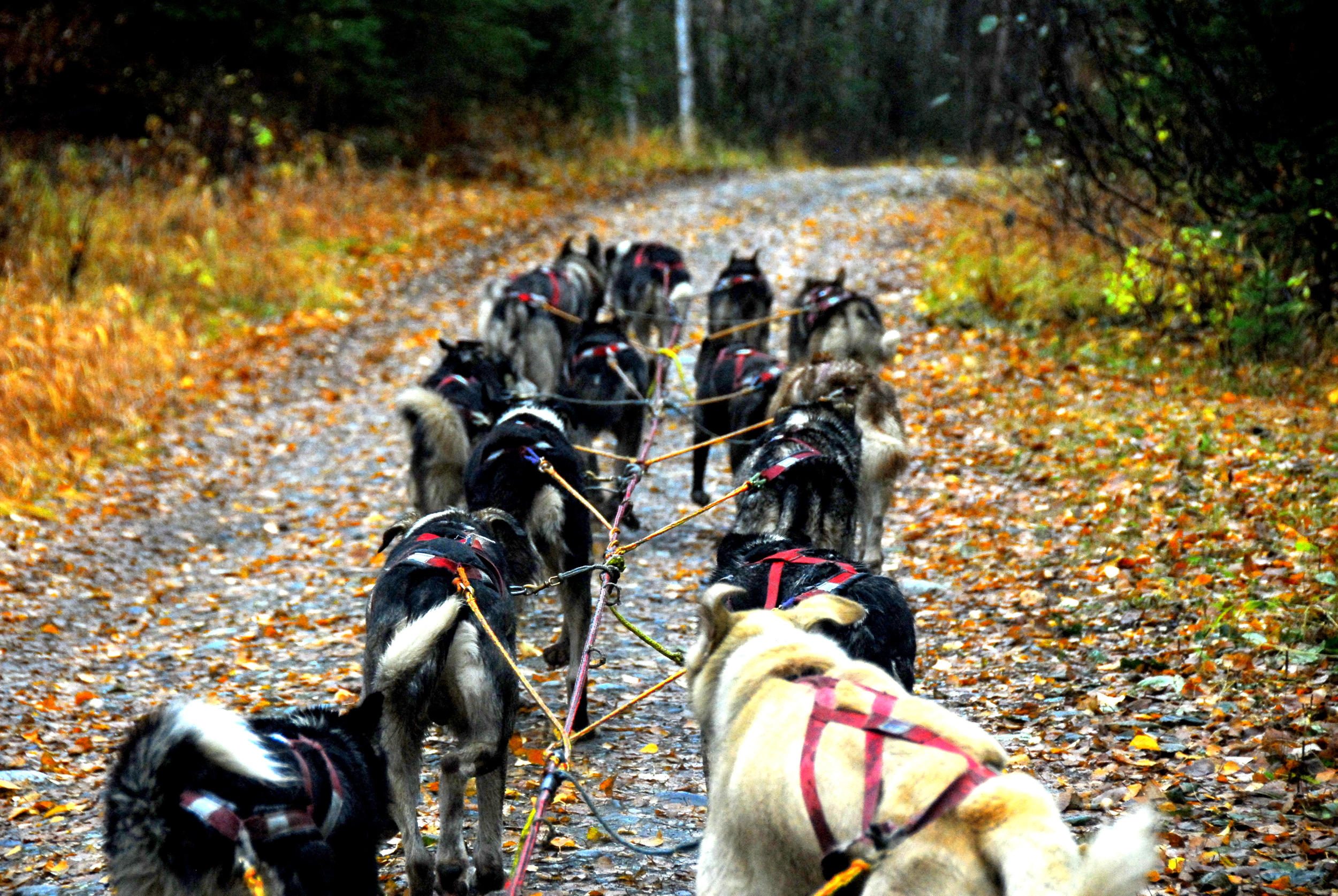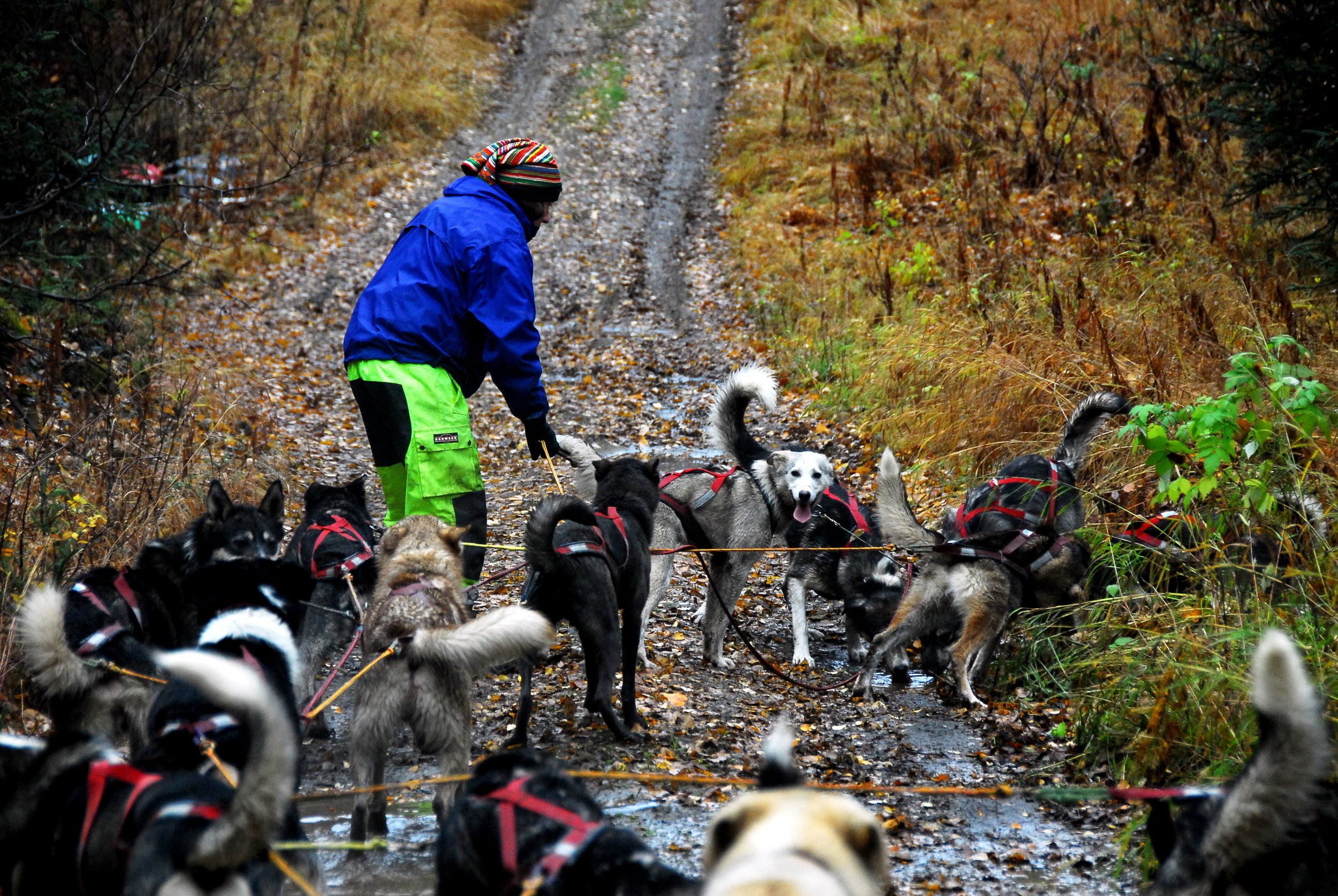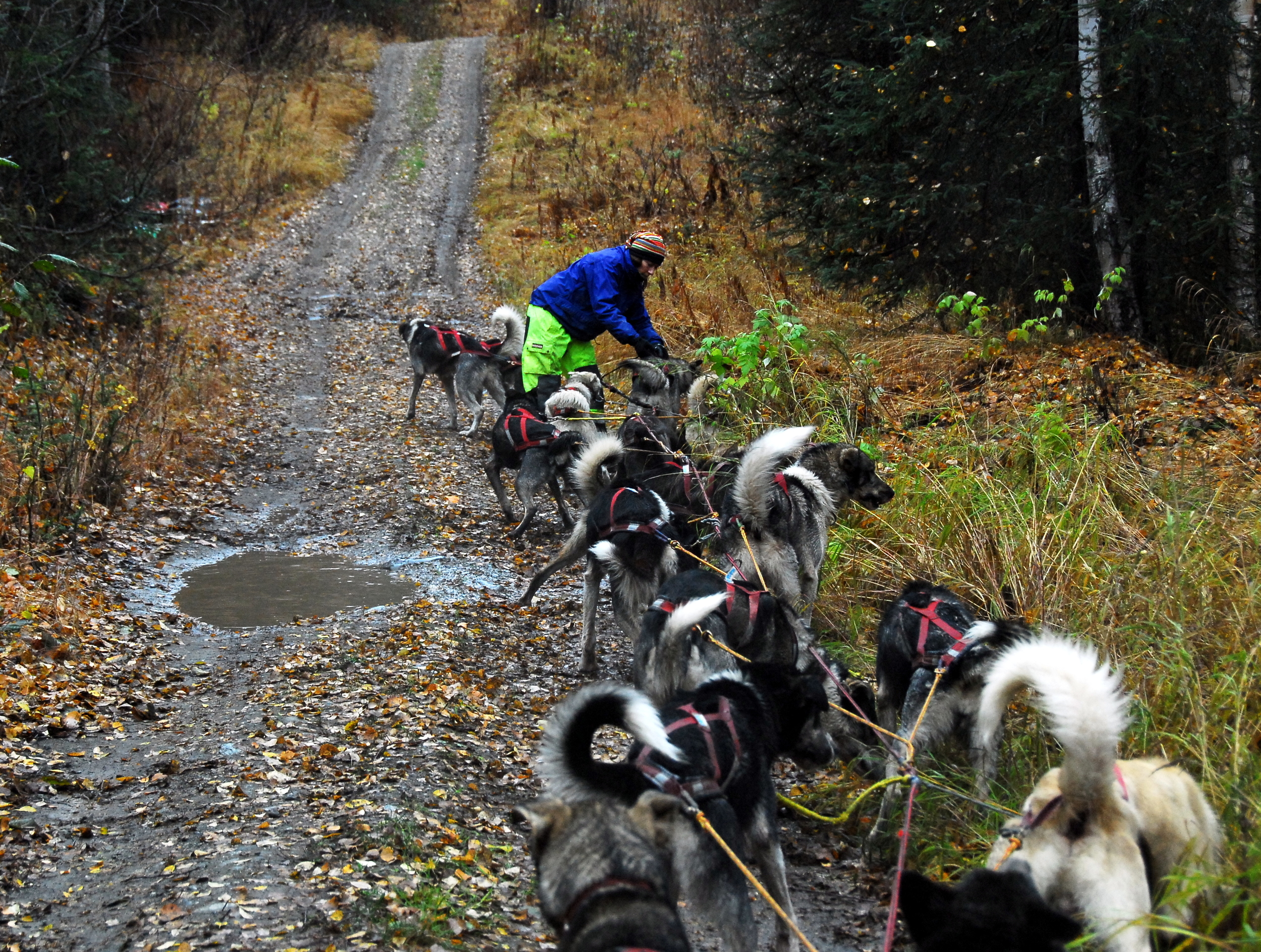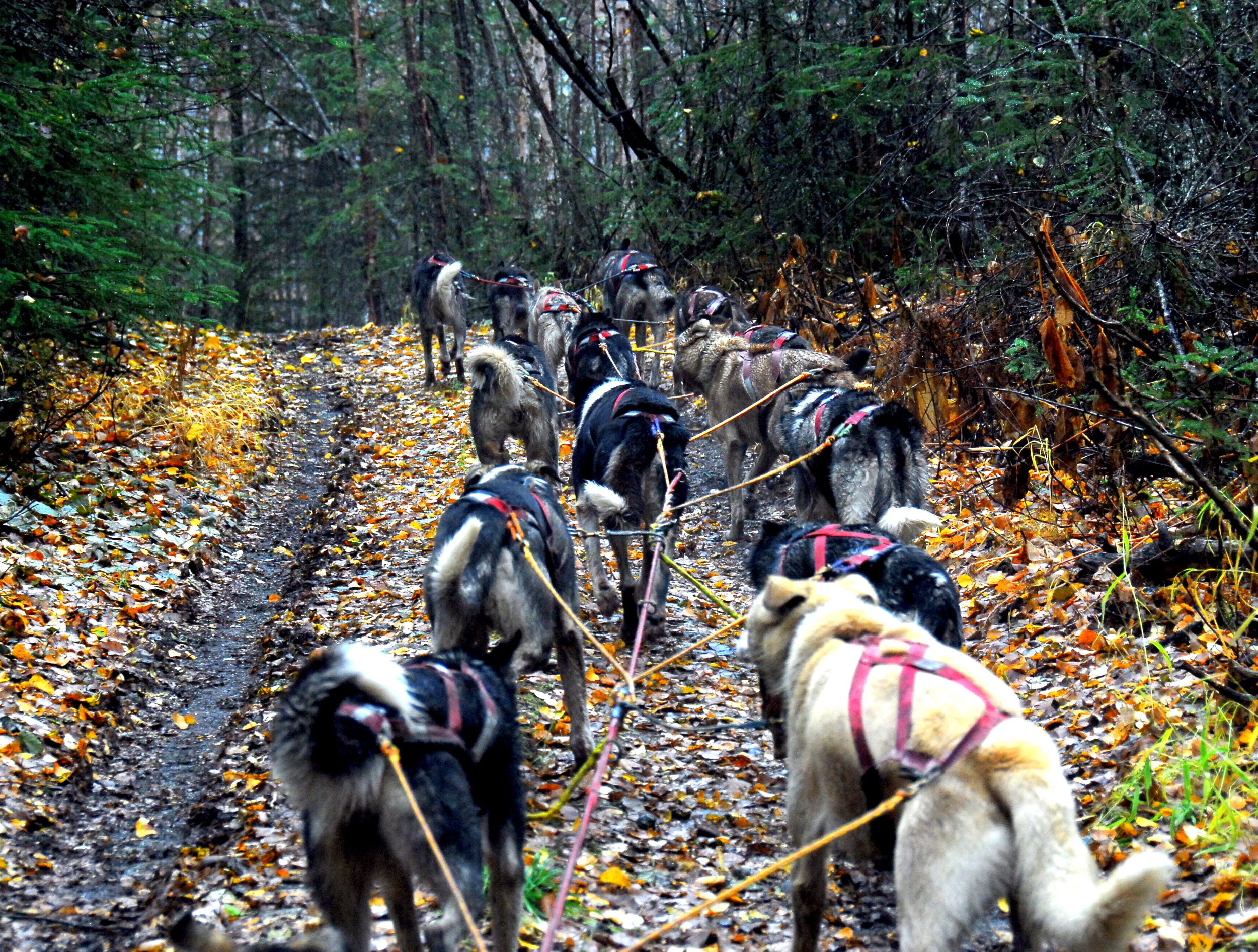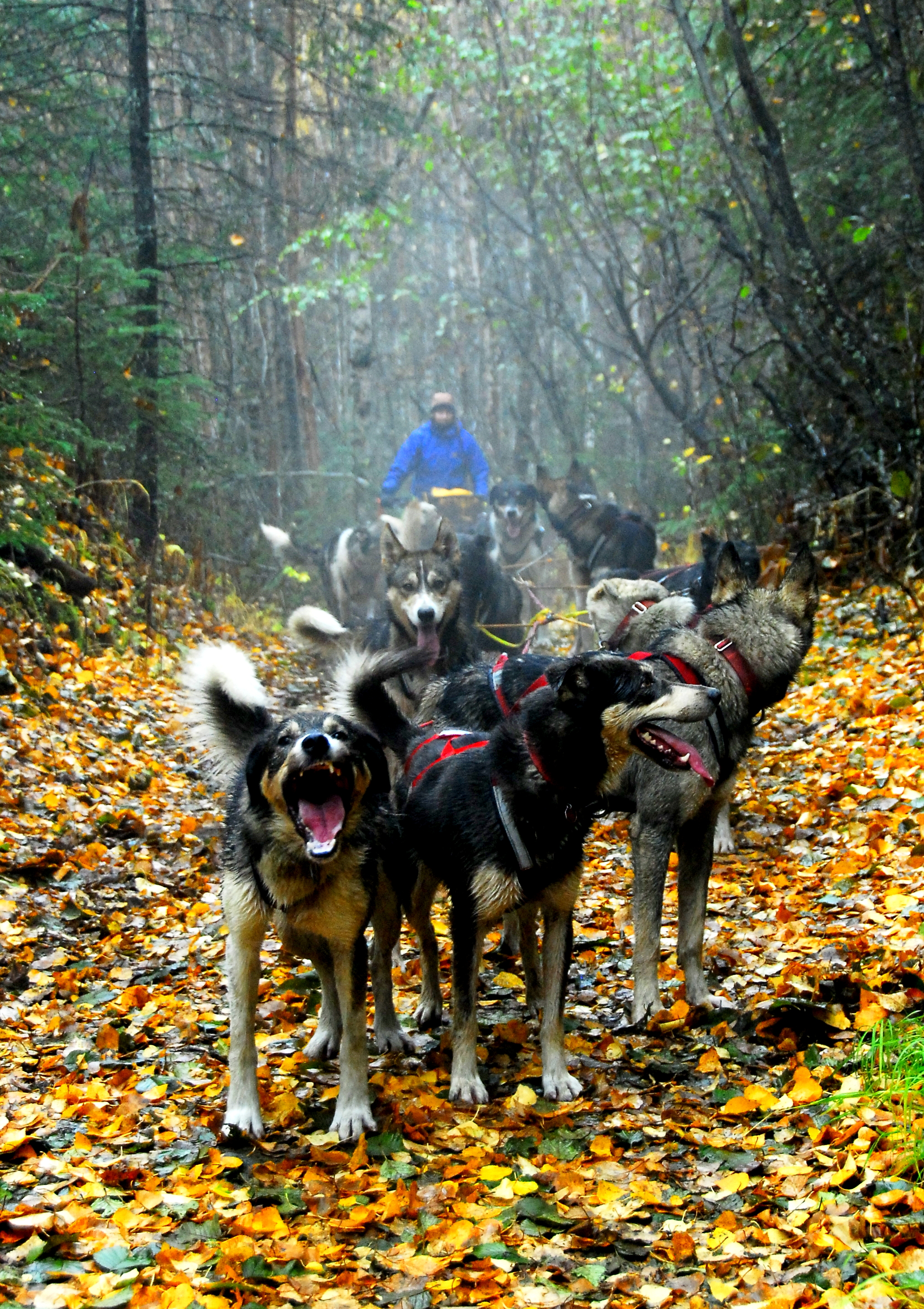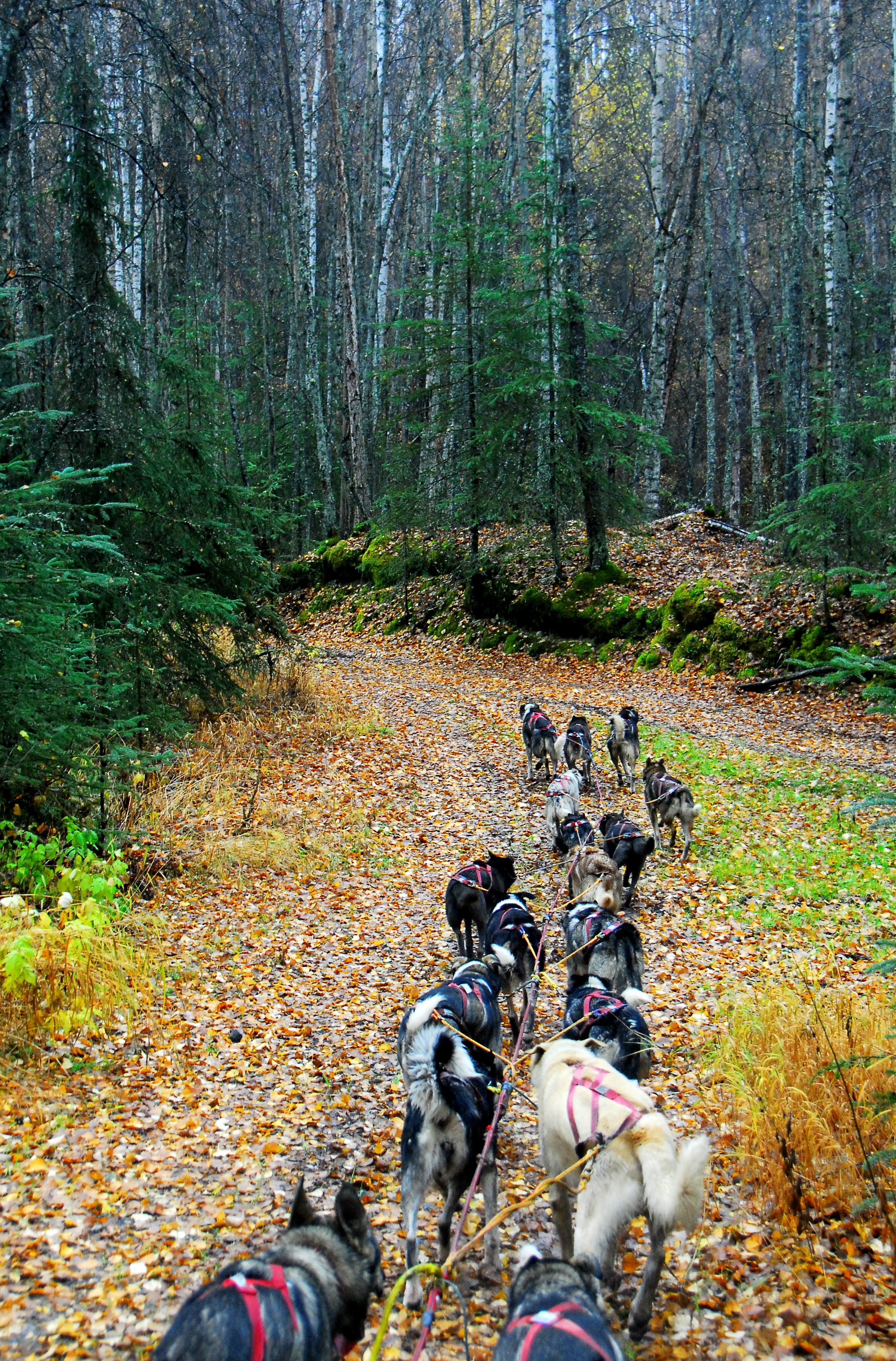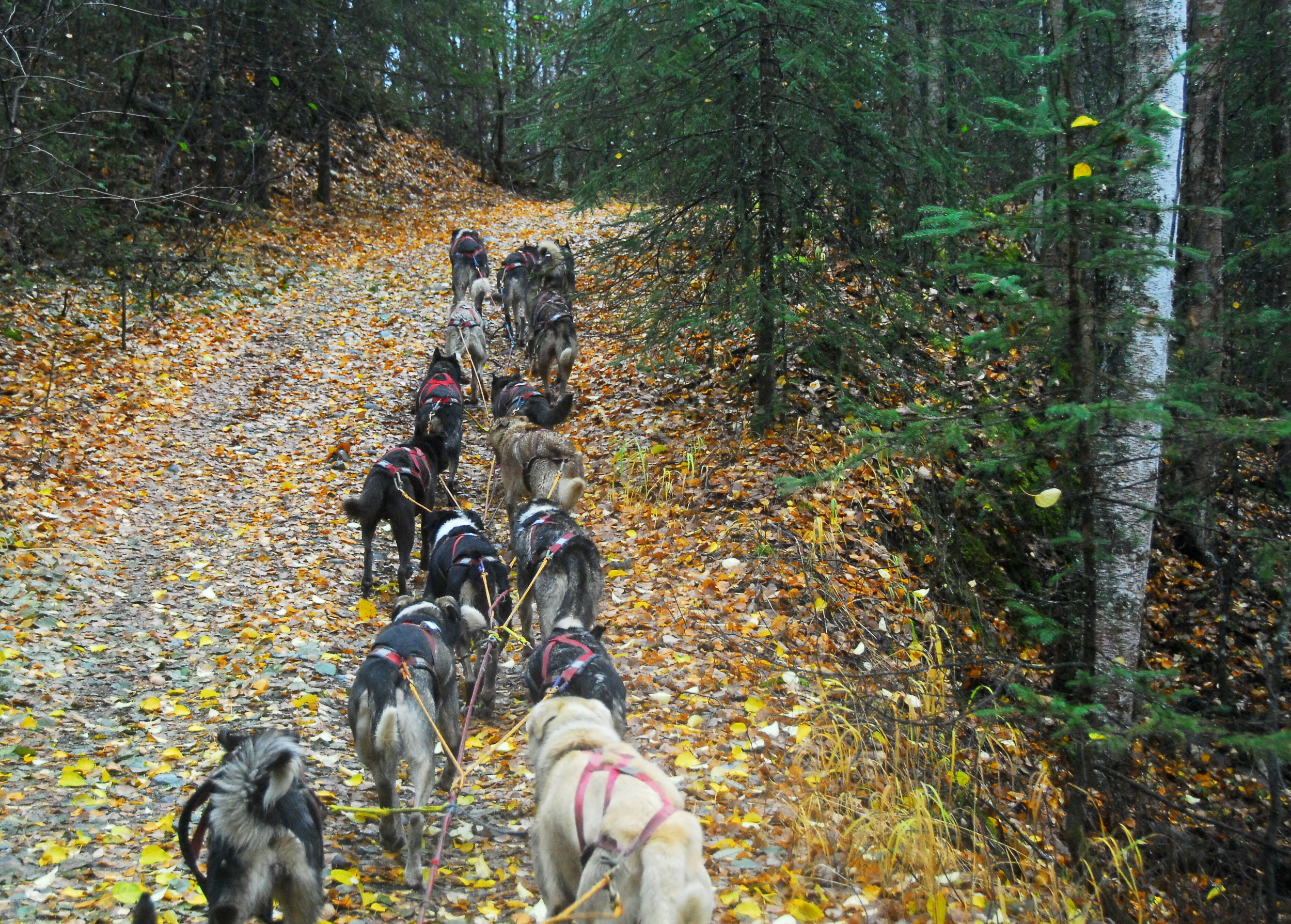It was very fun to come home to a pile of fan mail from students across the country. As with our adult fans, the children have some really great questions. I thought I'd share the questions and answers with all of you. Photos above by Katherine Updegraff, Kristie Lent and Evelyn.
1. What are some of your favorite things about Alaska? The amazing, natural beauty and diverse wildlife (soon the sandhill cranes will return!). Many unique and opportunities for work and play. The special, talented and loving people scattered throughout the state.
2. Why did you start mushing and why do you love it? I started mushing because I realized I loved the dogs and taking care of them. In 1999, I was presented with the opportunity to care for a mentoring doctor's team of 16 dogs while he went on vacation with his wife for 2 weeks. I enjoyed the experience so much I helped with his team for the next 5 years while they went on vacation. He took me for a few short dog sled rides, but I never drove a sled for several more years.
3. What happened to the four dogs you "lost" in the race? I assure you none of my dogs were "LOST" during the race. They were looked after and cared for 24 hours a day. Four of my dogs had small injuries or appeared tired at some point during the nearly 13 days I was racing, so I sent them home to rest and recover. They were all happy to see me and feeling fantastic by the time I got home after the race.
4. What year did Mama Libby have her puppies? May 2011
5. Are the puppies going to be in the race this year? Libby and 4 of her puppies started the race with me: Miyuki, Zumi, Eewa and Yama
6. How long have you been mushing? I consider my starting point of mushing when I spent a week with Bill Cotter in Nenana, Alaska doing a dog sledding intensive (dog mushing school). I told Bill at the beginning of the week I was having a litter of sled dog puppies in May, and wanted to feel safe and competent hooking up a small dog team to start practicing. Many people work as a dog handler for an experienced dog musher to learn how to train and race sled dogs. However, because I had my physical therapy job with commitments to school district and local children for home-based therapy, I decided it was best for me to learn dog mushing at my pace on my schedule. I learned an abundance of important information from Bill during that week, and worked up to an 8 dog team for 50 miles (following Bill and his team). I was so exhausted after that first 50 mile run I had a hard time counting the correct number of bones (treats) to give to the dogs in our teams when we got home.
After that week, Bill continued to be a valuable resource, as well as Ryan Redington, Jake Berkowitz and Jeff King. Their patience in answering my questions has been invaluable to my learning curve. I think of them often while on the trail, and am grateful for their guidance.
7. What are the names of your new puppies? I only have one puppy right now. Her name is Lil Bear. Barnum and Zig owned by Jeff King are her parents. We have high hopes for her! :)
8. What is your lead dog's name? Felon is his name, and he is posing in the photo above with me. This year I also borrowed four other lead dogs to help Felon: Falcon, Chew, Bahkita, and Bernadette. Libby and Hunter also helped out. 1000 miles is a really long way for one dog to be in lead for the whole race.
9. What are the names of the dogs on your Iditarod team? There is a collage above that has a photo and name of all of the dogs that started Iditarod 2016.
10. What is in the large bags that you pick up at each checkpoint? Those big, white bags are called "Drop Bags". There is always dog food (kibble, meat snacks and fish snacks). There is also a personal bag of snacks and drinks for the musher. I also put hand and toe warmers in my personal bag. I often packed a ziplock with a dry Buff, drive gloves and a dry hat. Sometimes there is extra plastic for the bottom of the sled. In the bags for Takotna, where I took my 24 hour rest, I sent blankets for the dogs.
11. How are the dogs able to eat sooooo much in the race and not get sick? The dogs are working very hard, and burn 10,000-12,000 calories per day. They need to eat a lot of food to keep going. Typically, they will only eat as much as they need. The dogs do not eat all the food we ship out. Extra is sent, in case we get held up unexpectedly. The leftover food stays with the village to help feed their dogs.
12. Don't you and the dogs get cold when you camp out away from checkpoints? The dogs have the same comforts (straw and sometimes a blanket) if we camp at a checkpoint or on the trail. The dogs snuggle up next to their partner in the straw and stay very warm. If you stick your hand under the dog while they are resting, you can feel the warmth. I will admit I got cold sleeping on the trail. We camped between checkpoints four times during this race. One of those times we stayed at Old Woman's Cabin. That was cozy because there was a wood stove. The other three times I curled up in my parka and sleeping bag with bivy sack (waterproof cover for sleeping bag) to try to stay warm. I use hand, toe and body warmers to help stay warm too.
13. What's the hardest part about dog racing? The two hardest parts about dog racing for me are getting very little sleep during the race, as well as when my dogs get injured. I bring a trailer with me so I can put the dogs in the trailer as soon as I see they are tired or hurt.
14. What's the easiest part about dog racing? Spending time with my team on the trail. I love it!
15. How do you get your dogs so fast? My dogs like to go fast, so I have to train them to run slower than they want to go. If I let them run as fast as they wanted, they would wear themselves out, and hurt themselves. I train them to run between 8 and 9 mph.
16. What keeps your food warm? Do you keep a microwave in your sled? I keep snacks in my sled like trail mix, Almond Joys, Paydays, Kind Bars and homemade goodies. They taste good even when they are frozen. The meals I take that are sealed in plastic get heated up in my cooker (that I make my dog water in), or in a microwave when I get to a checkpoint. I do not have space to carry a microwave in my sled, and there isn't any power to plug it into.
Our cooker makes heat with a fuel called HEET. I light it on fire, and it heats up water very quickly. The sealed food and bottles of drink can float around in the hot water to thaw out. And then, I use the water to make the dogs' supper.
17. What happens when you crash? I might laugh and roll my eyes. I make sure the dogs and I are ok. I check to make sure our sled is ok. And, then I put my sled back on the runners and continue on. Sometimes I have to empty snow out of my sled bag, or pick up something that might have fallen off/out of my sled (buckets, cooler, etc). I try to attach everything that's really important to either the sled or my clothes.
I had one big crash before I arrived in Rohn going down a very steep hill. That time my big, red cooler that I keep thawed dog meat in fell off. Fortunately, I was able to retrieve it, and re-attach it. It's held on by 3 bungees. It was a BIG, STEEP hill! We slid on our side with the sled for looong way before I could get the dogs to slow down. No one got hurt, but it was a wild ride!
Another time, I crashed and 1/2 the white buckets I use to feed the dogs feel off. I, unfortunately, didn't notice until I arrived at the next checkpoint. A couple nice snow machiners on the trail behind me brought them to the checkpoint for me. :) After that, I attached them better.
18. How big is your sled? I bet it's huge! Good question! I'll have to measure it, but for now, I attached some photos below for you to see.
19. Does the strongest dog go in the front or back? I have strong dogs in the front and back of my team. I put the dogs I feel aren't as tough or need a break in the middle of the team.
20. How many hours do you actually race? From the time we leave the starting line in Willow, until we reach the burled arch in Nome, it is considered "racing". I was racing for 12 days, 23 hours, 41 minutes and 54 seconds.
21. What do you do during breaks? When I stop the team on the trail or at a checkpoint, I take their tug lines off so they know they do not need to pull now. I get them food and snacks. I take their booties off. I give them medicine. I make them beds of straw. I put their coats and/or blankets on. I check to see if any of the dogs are sore. I sort through my drop bags to see what I want to take with me. I make a cooler of food for the next section of trail. I find some food and beverages for myself. I take a little nap (20 minutes to 3 hours). And then, I wake up the dogs, feed them again and put their booties on. Sometimes I move the dogs to different positions in the team. I put their tug lines back on, and off we go....
22. What do you think is the most challenging part of the Iditarod? It's a really long way. Nearly two weeks on a dog sled. Planning for the unexpected was a challenge this year. And, getting so little sleep.
23. How long do you train before the race? The dogs continue running all summer for 3-5 miles several days per week. At the end of August, we start training on a daily basis working up slowly from 5 mile to 85 mile runs. We start on a four wheeler &/or truck, and then switch to a sled around early November.
24. How many times do you feed your dogs during the race? While on the trail, I stop to give them a snack &/or water at least every 1.5-1.75 hours. If it's warm, I stop much more often for them to dip for snow and roll around in the snow to cool off. When I get to a checkpoint, I feed them as soon as we arrive. I also leave snacks in their beds of straw while they rest, in case they get hungry. And then, I feed them again before we leave the checkpoint.
25. When did you start racing? I did my first qualifying race for Iditarod in January 2014. It was the Knik 200. The rest of my qualifiers were done in January 2015: Copper Basin 300, Kusko 300 and Northern Lights 300
26. How do you have fun with your dogs at home? on the trail? My dogs love to have time out of the dog yard to run free. I own 40 swampy acres, so we enjoy going for walks together. I have taken up to 14 dogs out at the same time; however, I usually only take 4 or 5. Some of my dogs really like to come in the house. Some like to chew on bones, some like squeaky toys. Some like to hunt mice and ermine. Some are great snugglers. Some like to be brushed (some hate it!). They all love to be pet.
When we're racing, they still love to be talked to and petted. And, they like to have their muscles rubbed. I also sing to them while they're running. It perks them up, and I think it often they start to trot a little faster.
27. How many dogs do you have?
Twenty-five
28. Have you won at the race before?
No, this was our first attempt at Iditarod. Our goal was to finish in Nome with a happy and healthy dog team.
29. How old are your dogs?
My dogs ages range between 10 months and 8 years
30. What makes you nervous about the race?
The unexpected weather conditions are what worries me the most.
31. Who inspired you to run the Iditarod?
I worked in Skwentna at the checkpoint for the Iditarod for about 10 years. During those years, I noticed the mushers were simply people, just like me. Mushers were people who decided to dedicate their life to taking care of their dogs, learning how to drive the dogs, and training them to participate in a distance event. All of the people who were choosing to race dogs inspired me to challenge myself to do something out of my comfort zone... run the Iditarod.
32. What was your strategy for this year?
As I was a rookie in the race, and my dogs were all inexperienced, we planned to run a very conservative race. I trained my team to run <9 mph. And, I planned to break all runs into <50 miles. And then, rest as long as I ran (rounding up to the next hour).

